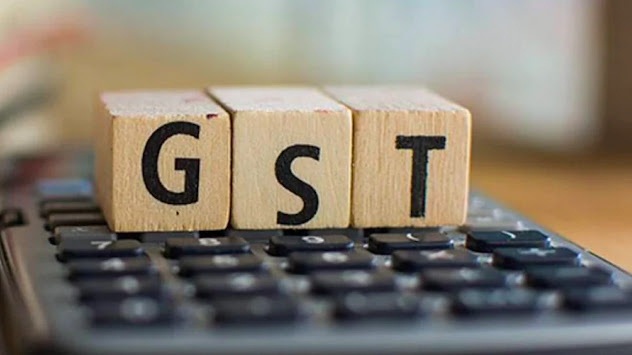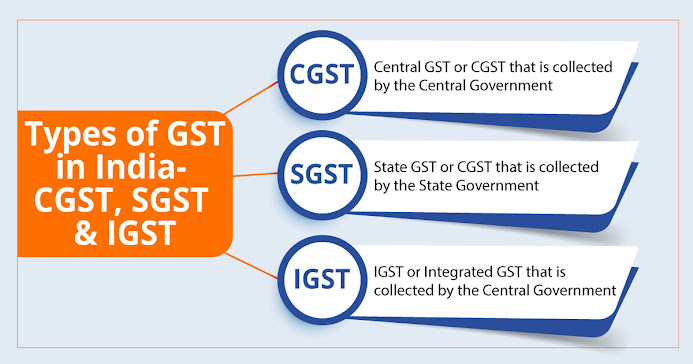GST in Tally Prime
GST
(Goods and Service Tax)
GST is an Indirect Tax which has replaced many Indirect Taxes in India. The Goods and Service Tax Act was passed in the Parliament on 29th March 2017. The Act came into effect on 1st July 2017.
In simple words, Goods and Service Tax (GST) is an indirect
tax levied on the supply of goods and services. This law has replaced many
indirect tax laws that previously existed in India.
GST is one
indirect tax for the entire country.
Old Tax Method
Components of GST-
There are 5 taxes applicable
under this system-
CGST:
Collected by the Central
Government on an intra-state sale (Eg: transaction happening within
Maharashtra)
SGST:
Collected by the
State Government on an intra-state sale (Eg: transaction happening within
Maharashtra)
IGST:
Collected by the
Central Government for inter-state sale (Eg: Maharashtra to Tamil Nadu)
UTGST:
Union Territory Goods
& Services Tax – Applicable if you are in union territory in replacement
with SGST.
Cess :
Applicable on
certain items in addition to the above GST.
Collect GST Taxes:
Define GST Taxes:

Intra state-:
1) State to State Sale/ Purchase 👉 CGST & SGST (Both)
Ex-Up to Up Sale/Purchase
Inter State-:
2) State to other State (Not Local) Sale/Purchase 👉 IGST (Only)
Ex-Up to Gujrat Sale/Purchase
GST Tax Rate
There are five slabs fixed for GST Rates - 0%, 5%, 12%, 18%
and 28%
Common Nil Rated or 0% GST Products:
Milk, eggs, curd, buttermilk, Fresh vegetables
and fruits, Un-branded wheat and rice, un-branded flour, Puja Items
Items under GST 5%
Frozen Vegetables and fruits, branded wheat
and rice, branded flour, hand-made safety matches, cotton, cotton fabrics,
Footwear below Rs.500 etc.
Items under GST 12%
Butter, Cheese, Dry fruits, mobile phones,
ayurvedic products etc.
Items under GST 18%
Biddi wrapper leaves, biscuits, footwear
exceeding Rs. 500, man-made fibre, hair oil, soap, toothpaste etc.
Items under GST 28%
Biris, LED TV, AC, Cars, tobacco products,
cement etc.
GSTIN (GST Identification Number)
GSTIN, or Goods and Services Tax
Identification Number, is a 15-digit alpha-numeric code that your firm gets
after being registered under the GST regimen of India. If the annual turnover
of your business exceeds the threshold limit or the firm does inter-state
business, you should mandatorily apply for the firm’s GSTIN.
Structure of GSTIN
GSTIN number is a 15-digit code representing
several particulars about the business, including its PAN number, state of
business, etc. Following is the breakdown of the GSTIN structure:
1) First two digits indicate the state where the
business is located.
2) Following ten digits are the PAN number of the
business or its owner.
3) Next digit is the entity number under the same
PAN number.
4) The 14th number is ‘Z’ by default.
5) The last number is a check code that helps in
detecting errors.
HSN/SAC Code
HSN/SAC Code HSN (Harmonized System of
Nomenclature) is developed by the World Customs Organization (WCO). These codes
are used to classify the goods and are accepted across the world. HSN codes help
in filling the GST returns, import and export of goods.
They are similar in the countries that are
under the WCO. 6-digit HSN codes are typically used for the goods. However,
some countries use 8-digit codes to sub classify goods.
Mobile Telephone HSN Code :851712
GST
👇
F11 Feature
👇
Enable and Goods and services Tax (GST) ?
YES
Default Ledger
1)
 Reviewed by ADcomputercampus
on
April 03, 2023
Rating:
Reviewed by ADcomputercampus
on
April 03, 2023
Rating:
























No comments: